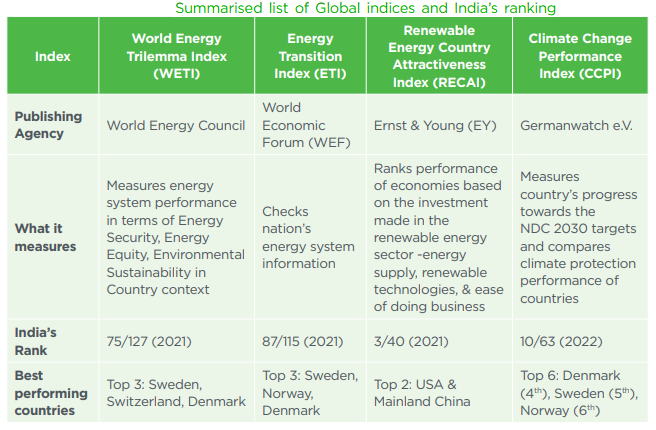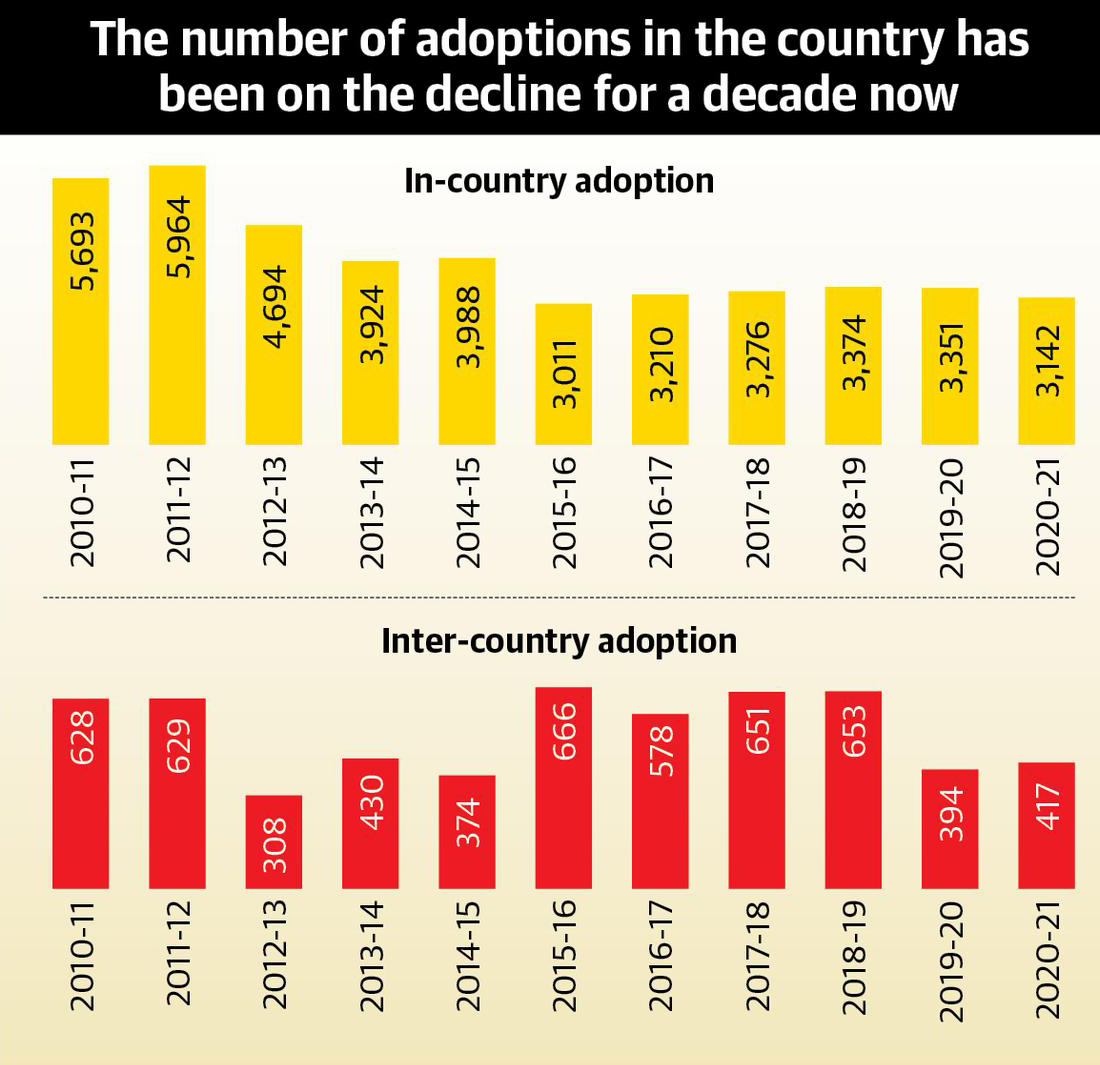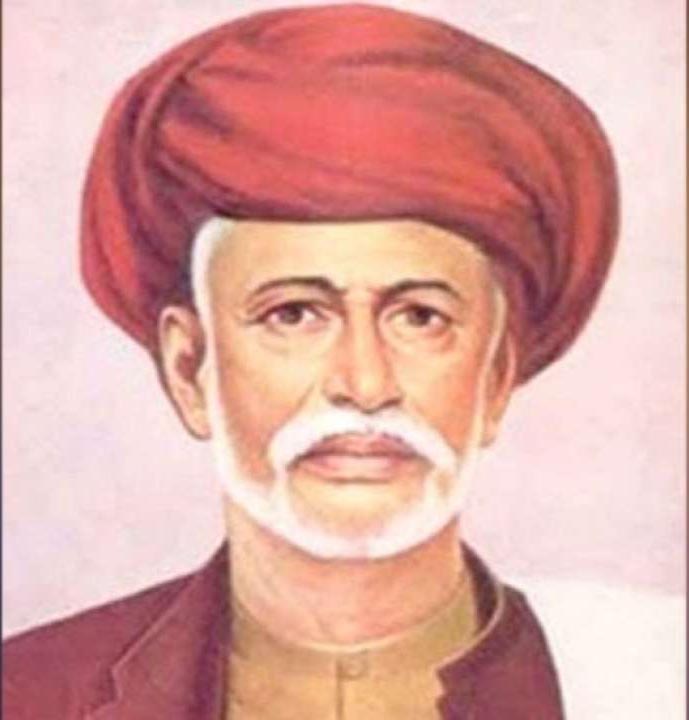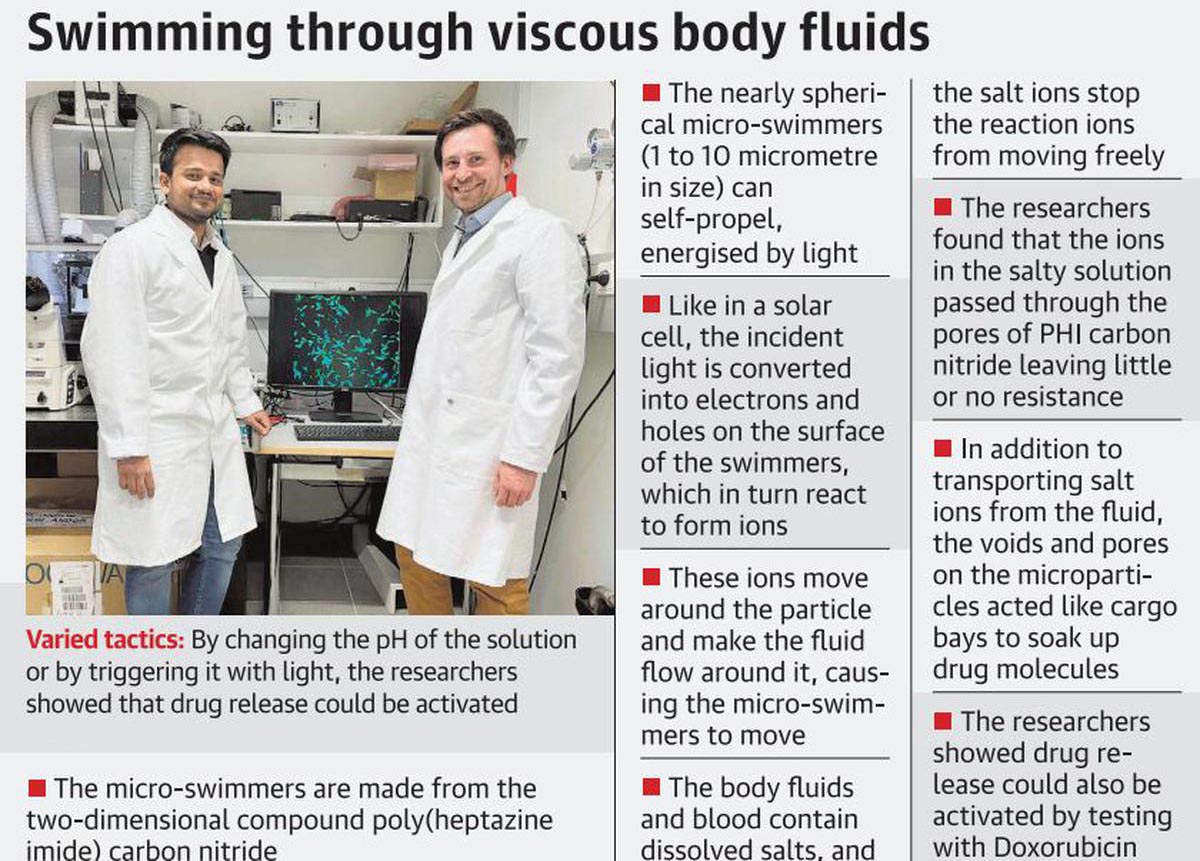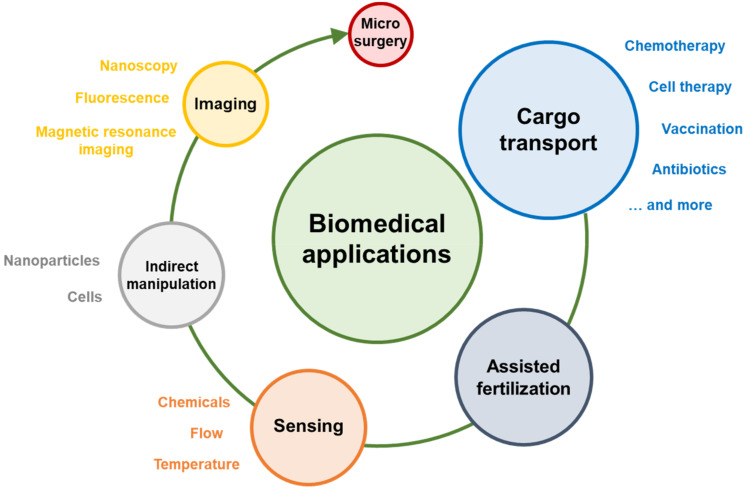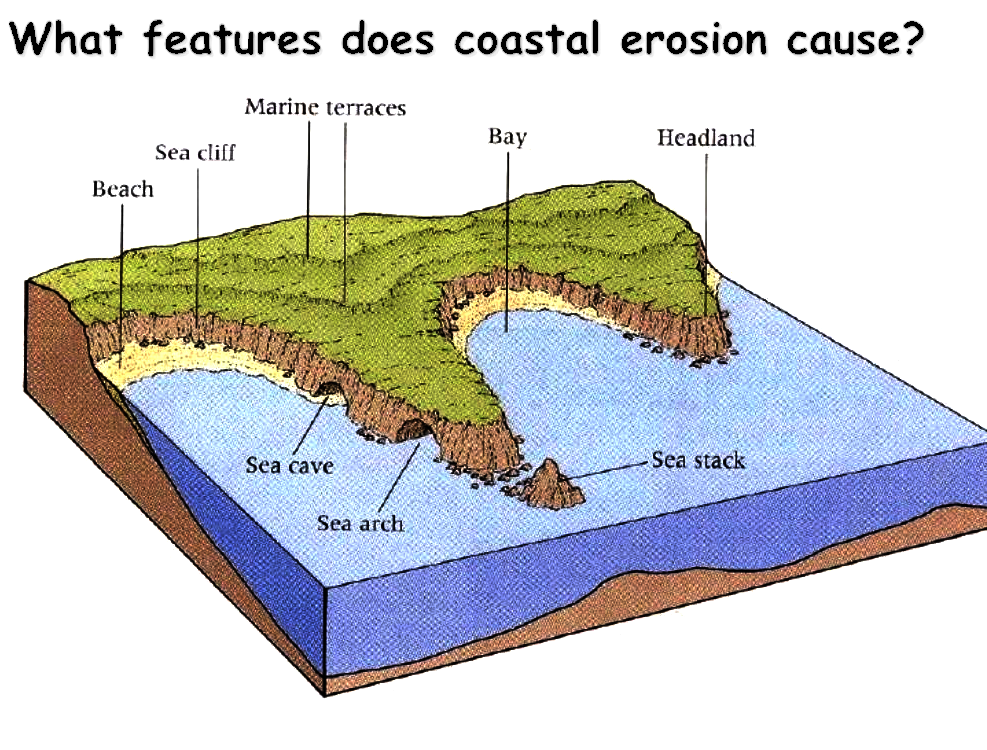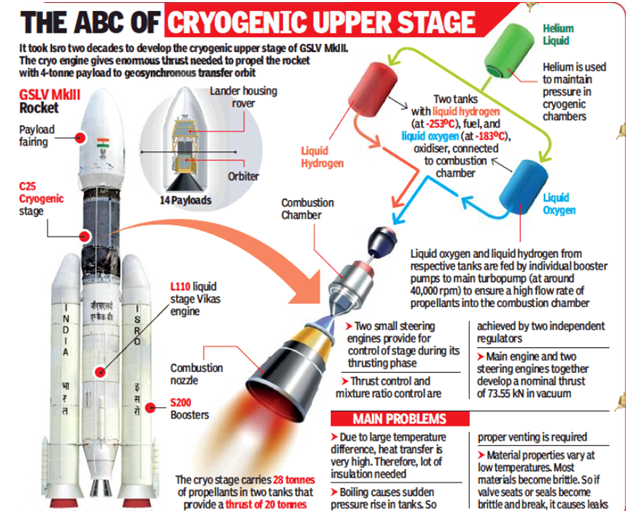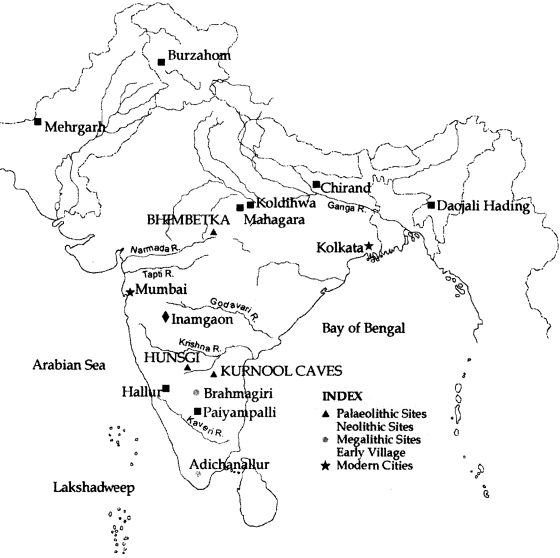State Energy and Climate Index
For Prelims: Global climate indices and India’s Ranking, State Energy and Climate Index, NITI Aayog.
For Mains: India's Contribution Towards Net Zero Carbon Emission, Panchamrit advocacy of five elements for climate change at CoP-26, Conservation.
Why in News?
Recently, the NITI Aayog launched the State Energy and Climate Index (SECI). It is the first index that aims to track the efforts made by states and UTs in the climate and energy sector.
- The parameters of the index have been devised keeping in mind India’s goals for climate change and clean energy transition.
What are the Key Points of SECI?
- Objectives: The objectives of the index are:
- Ranking the States based on their efforts towards improving energy access, energy consumption, energy efficiency, and safeguarding the environment.
- Helping drive the agenda of the affordable, accessible, efficient and clean energy transition at the State level,
- Encouraging healthy competition among the states on different dimensions of energy and climate.
- Parameters: The State Energy and Climate Index (SECI) ranks states and UTs on six parameters:
- Discoms' (Power distribution companies) Performance,
- Access Affordability And Reliability Of Energy,
- Clean Energy Initiatives,
- Energy Efficiency,
- Environmental Sustainability,
- New Initiatives.
- Categorization: Based on the outcome of SECI scores, states and union territories have been categorised into three groups -- front runners, achievers, and aspirants.
- Top Performers: Gujarat, Kerala and Punjab have been adjudged as top three performer states in the NITI Aayog’s SECI.
- The top three performers among smaller states are Goa, Tripura and Manipur.
- Unsatisfactory Performance: States like Chhattisgarh, Madhya Pradesh and Jharkhand were placed at the bottom.
- Top Performers: Gujarat, Kerala and Punjab have been adjudged as top three performer states in the NITI Aayog’s SECI.
- Need: India is a resource-rich and diverse country. Many of its states are comparable to countries in the European Union in terms of area, population, and diversity of resources.
- Thus, a one-size-fits-all approach will not be appropriate as each state and Union Territory (UT) differ in terms of culture, geography, and use of energy resources.
- It is imperative for each state and UT to have its own policy to harness its potential and capability.
What are India’s Climate Change Commitments?
- The Prime Minister of India at the COP-26 Glasgow summit presented five nectar elements, Panchamrit, to deal with climate change:
- India will reach its non-fossil installed electricity capacity to 500 GW by 2030.
- India will meet 50% of its electricity requirements from renewable energy by 2030.
- India will reduce the total projected carbon emissions by one billion tonnes from now onwards till 2030.
- By 2030, India will reduce the carbon intensity of its economy by less than 45%.
- By the year 2070, India will achieve the target of Net-zero.
UPSC Civil Services Examination, Previous Year Questions (PYQs)
Q. Consider the following statements: (2016)
- The International Solar Alliance was launched at the United Nations Climate Change Conference in 2015.
- The Alliance includes all the member countries of the United Nations.
Which of the statements given above is/are correct?
(a) 1 only
(b) 2 only
(c) Both 1 and 2
(d) Neither 1 nor 2
Ans: (a)
- International Solar Alliance was launched at the United Nations Climate Change Conference in Paris in November 2015 by the Indian Prime Minister and French President. Hence, statement 1 is correct.
- At initial stage ISA was opened to membership of countries lying fully or partly between the Tropics of Cancer and Capricorn (torrid zone). In 2018, the membership of ISA was opened for all the UN members. However, all the member countries of the UN are not its members. Hence, statement 2 is not correct.
- Therefore, option (a) is the correct answer.
Q. With reference to the Agreement at the UNFCCC Meeting in Paris in 2015, which of the following statements is/are correct? (2016)
- The Agreement was signed by all the member countries of the UN and it will go into effect in 2017.
- The Agreement aims to limit the greenhouse gas emissions so that the rise in average global temperature by the end of this century does not exceed 2ºC or even 1.5ºC above pre-industrial levels.
- Developed countries acknowledged their historical responsibility in global warming and committed to donate $ 1000 billion a year from 2020 to help developing countries to cope with climate change.
Select the correct answer using the code given below:
(a) 1 and 3 only
(b) 2 only
(c) 2 and 3 only
(d) 1, 2 and 3
Ans: (b)
- The Paris Agreement was adopted in December 2015 at COP21 in Paris, France by the Conference of the Parties (COP) to the United Nations Framework Convention on Climate Change (UNFCCC). It entered into force on 4th November 2016. Hence, statement 1 is not correct.
- The Agreement aims to limit the greenhouse gas emissions so that the rise in average global temperature by the end of this century does not exceed 2°C or even 1.5°C above pre-industrial levels. Hence, statement 2 is correct.
- Through the Cancun Agreements in 2010 developed country Parties committed to a goal of mobilizing jointly USD 100 billion per year by 2020 to address the needs of developing countries.
- Further, they also agreed that prior to 2025 the Conference of the Parties serving as the meeting of the Parties to the Paris Agreement shall set a new collective quantified goal from a floor of USD 100 billion per year. Hence, statement 3 is not correct.
- Therefore, option (b) is the correct answer.
Child Adoption in India
For Prelims: Adoption (First Amendment) Regulations, 2021, CARA.
For Mains: Child Adoption in India and related issues, Issues Related to Children.
Why in News?
Recently, the Supreme Court agreed to hear a plea seeking to simplify the legal process for child adoption in India.
- In 2021, Adoption (First Amendment) Regulations, 2021 was notified which allowed Indian diplomatic missions abroad to be in charge of safeguarding adopted children whose parents move overseas with the child within two years of adoption.
What are the Issues Related to Child Adoption in India?
- Declining Statistics and Institutional Apathy:
- There is a wide gap between adoptable children and prospective parents, which may increase the length of the adoption process.
- Data shows that while more than 29,000 prospective parents are willing to adopt, just 2,317 children are available for adoption.
- Returning Children after Adoption:
- Between 2017-19, the Central Adoption Resource Authority (CARA) faced an unusual upsurge in adoptive parents returning children after adopting.
- Central Adoption Resource Authority (CARA) is a statutory body of the Ministry of Women & Child Development. It functions as the nodal body for adoption of Indian children and is mandated to monitor and regulate in-country and inter-country adoptions.
- According to the data, 60% of all children returned were girls, 24% were children with special needs, and many were older than six.
- The primary reason these ‘disruptions’ occur is that disabled children and older children take much longer to adjust to their adoptive families.
- This is primarily because older children find it challenging to adjust to a new environment because institutions do not prepare or counsel children about living with a new family.
- Between 2017-19, the Central Adoption Resource Authority (CARA) faced an unusual upsurge in adoptive parents returning children after adopting.
- Disability and Adoption:
- Only 40 children with disabilities were adopted between 2018 and 2019, accounting for approximately 1% of the total number of children adopted in the year.
- Annual trends reveal that domestic adoptions of children with special needs are dwindling with each passing year.
- Manufactured Orphans and Child Trafficking:
- In 2018, Ranchi’s Mother Teresa’s Missionaries of Charity came under fire for its “baby-selling racket” after a nun from the shelter confessed to selling four children.
- Similar instances are becoming increasingly common as the pool of children available for adoption shrinks and waitlisted parents grow restless.
- Also, during the pandemic, cases of threat of child trafficking and illegal adoption rackets came into play.
- These rackets usually source children from poor or marginalised families, and unwed women are coaxed or misled into submitting their children to trafficking organisations.
- In 2018, Ranchi’s Mother Teresa’s Missionaries of Charity came under fire for its “baby-selling racket” after a nun from the shelter confessed to selling four children.
- LGBTQ+ Parenthood and Reproductive Autonomy:
- Despite the constant evolution of the definition of a family, the ‘ideal’ Indian family nucleus still constitutes a husband, a wife and daughter(s) and son(s).
- In February 2021, while addressing petitions seeking the legal recognition of LGBTQI+ marriages, the government opined that LGBTQI+ relationships could not be compared to the “Indian family unit concept” of a husband, wife and children.
- The invalidity of LGBTQI+ marriages and relationships in the eyes of the law obstructs LGBTQI+ persons from becoming parents because the minimum eligibility for a couple to adopt a child is the proof of their marriage.
- To negotiate these unfavourable legalities, illegal adoptions are becoming increasingly common among queer communities.
- Moreover, provisions under the Surrogacy (Regulation) Bill, 2020 and Assisted Reproductive Technology (Regulation) Bill, 2020 completely exclude LGBTQI+ families, stripping them of their reproductive autonomy.
- Despite the constant evolution of the definition of a family, the ‘ideal’ Indian family nucleus still constitutes a husband, a wife and daughter(s) and son(s).
What are the Laws to Adopt a Child in India?
- The adoption in India takes place under Hindu Adoptions and Maintenance Act, 1956 (HAMA) and the Juvenile Justice (Care and Protection of Children) Act, 2015 (JJ Act).
- HAMA, 1956 falls in the domain of Ministry of Law and Justice and JJ Act, 2015 pertains to the Ministry of Women and Child Development.
- As per the government rules, Hindus, Buddhists, Jains, and Sikhs are legalized to adopt kids.
- Until the JJ Act, the Guardians and Ward Act (GWA), 1980 was the only means for non-Hindu individuals to become guardians of children from their community.
- However, since the GWA appoints individuals as legal guardians and not natural parents, guardianship is terminated once the ward turns 21 and the ward assumes individual identity.
Way Forward
- Need to Prioritise Children’s Welfare:
- The primary purpose of giving a child in adoption is his welfare and restoring his or her right to family.
- CARA and the ministry must accord attention to the vulnerable and invisible community of children silently suffering in our institutions.
- Need to Strengthen the Institutional Mandates:
- The adoption ecosystem needs to transition from a parent-centric perspective to a child-centric approach.
- Need to Adopt an Inclusive Approach:
- There is a need to adopt an inclusive approach that focuses on the needs of a child to create an environment of acceptance, growth, and well being, thus recognising children as equal stakeholders in the adoption process.
- Adoption Process Needs to Simplified:
- The process of adoption needs to be simplified by taking a close relook at the various regulations guiding the procedure of adoption.
- The ministry can engage with concerned experts working in this field to get feedback on the practical difficulties which prospective parents are facing.
Jyotirao Phule
For Prelims: Jyotrao Phule, Savitribai.
For Mains: Socio-cultural Reform Movements, Important Personalities.
Why in News?
The Prime Minister has paid tribute to the great social reformer, philosopher and writer Mahatma Jyotirao Phule on his birth anniversary (11th April). He is also known as Jyotiba Phule.
Who was Jyotirao Phule?
- Brief Profile:
- Birth: Phule was born on 11th April, 1827 in present-day Maharashtra and belonged to the Mali caste of gardeners and vegetable farmers.
- Education: In 1841, Phule was enrolled at the Scottish Missionary High School (Pune), where he completed education.
- Ideology: His Ideology was based on: Liberty, Egalitarianism, Socialism.
- Phule was influenced by Thomas Paine’s book titled The Rights of Man and believed that the only solution to combat the social evils was the enlightenment of women and members of the lower castes.
- Major Publications: Tritiya Ratna (1855), Powada: Chatrapati Shivajiraje Bhosle Yancha (1869), Gulamgiri (1873), Shetkarayacha Aasud (1881).
- Related Association: Phule along with his followers formed Satyashodhak Samaj in 1873 which meant ‘Seekers of Truth’ in order to attain equal social and economic benefits for the lower castes in Maharashtra.
- Municipal Council Member: He was appointed commissioner to the Poona municipality and served in the position until 1883.
- Title of Mahatma: He was bestowed with the title of Mahatma on 11th May, 1888 by a Maharashtrian social activist Vithalrao Krishnaji Vandekar.
- Social Reformer:
- In 1848, he taught his wife (Savitribai) how to read and write, after which the couple opened the first indigenously run school for girls in Pune where they both taught.
- He was a believer in gender equality and he exemplified his beliefs by involving his wife in all his social reform activities.
- By 1852, the Phules had established three schools but all of them had shut by 1858 due to the shortage of funds after the Revolt of 1857.
- Jyotiba realised the pathetic conditions of widows and established an ashram for young widows and eventually became an advocate of the idea of Widow Remarriage.
- Jyotirao attacked the orthodox Brahmins and other upper castes and termed them as "hypocrites".
- In 1868, Jyotirao constructed a common bathing tank outside his house to exhibit his embracing attitude towards all human beings and wished to dine with everyone, regardless of their caste.
- He started awareness campaigns that ultimately inspired the likes of Dr. B.R. Ambedkar and Mahatma Gandhi, stalwarts who undertook major initiatives against caste discrimination later.
- It is believed by many that it was Phule who first used the term ‘Dalit’ for the depiction of oppressed masses often placed outside the ‘varna system’.
- He worked for abolishment of untouchability and caste system in Maharashtra.
- In 1848, he taught his wife (Savitribai) how to read and write, after which the couple opened the first indigenously run school for girls in Pune where they both taught.
- Death: 28th November, 1890. His memorial is built in Phule Wada, Pune, Maharashtra.
UPSC Civil Services Examination, Previous Year Questions (PYQs)
Q. Satya Shodhak Samaj organized (2016)
(a) a movement for upliftment of tribals in Bihar
(b) a temple-entry movement in Gujarat
(c) an anti-caste movement in Maharashtra
(d) a peasant movement in Punjab
Ans: (c)
Micro Swimmers for Drug Delivery
For Prelims: Microswimmers, photocatalytic, PHI carbon nitride.
For Mains: Drug delivery, Robotics.
Why in News?
Recently, research has shown that it is possible to use light as a fuel to move microbots in real-body conditions with intelligent drug-delivery that is selectively sensitive to cancer cells.
- These microbots are referred to as microswimmers.
- The research is led by Max Planck Institute for Intelligent Systems (MPI-IS) and Max Planck Institute for Solid State Research (MPI-FKF), Stuttgart, Germany.
What are the Key Points of the Research?
- About: These microbots are made from the two-dimensional compound poly (heptazine imide) carbon nitride (i.e. PHI carbon nitride).
- These microbots are like miniaturised humans.
- They range from 1-10 micrometre (a micrometre is one-millionth of a metre) in size, and can self-propel when energised by shining light.
- How Microbots Swim: The PHI carbon nitride microparticles are photocatalytic.
- The particles are nearly spherical, and the incident light illuminates one-half of the sphere, leaving the other dark.
- As photocatalysis is light-driven, it occurs only on the brightened hemisphere.
- As the ions move from the bright side to the dark side, micro-swimmers march towards the direction of the light source.
- This reaction, combined with the particle's electric field, makes the microbots (micro-swimmers) swim.
- Existing Barriers: The body fluids and blood contain dissolved salts.
- When salts are present, the salt ions stop the reaction ions from moving freely as they will just bind or recombine with them and stop them.
- So all the chemically propelled swimmers can't swim in solutions containing salts.
- For example, when dissolved in water, common salt (NaCl) breaks up into sodium (Na +) and chloride (Cl -) ions.
- These ions will neutralise the ions created by the photocatalytic reaction, thereby impeding the self-propulsion.
- Contribution of Research: The researchers found that the ions in the salty solution passed through the pores of PHI carbon nitride. Thus, there was little or no resistance from the salt ions.
- In addition to transporting salt ions from the fluid, the voids and pores on the microparticles worked as cargo bays and could soak up large amounts of drug.
- Microswimmers for drug delivery introduced in the past relied on 'artificial capsules," which were meant to be filled with drugs and delivered to specific locations in the body.
- Creating these capsules, however, could be both complex and expensive. In contrast, the particles used by the researchers are cheap, organic, and spongy by design, binding directly to drugs or other substances.
- This means that they could be easier to implement on a large-scale. Remarkably, they can also be loaded with more drugs (i.e., 185% of their own mass) than other materials used in the past.
- Significance: Microswimmers could allow doctors to deliver drugs to targeted regions inside the human body.
- The microswimmers could also help to introduce specific substances in lakes or in the ocean.
- For instance, the swimmers could be deployed in endangered natural environments to heal specific animal species or exterminate harmful organisms.
UPSC Civil Services Examination Previous Year Questions (PYQs)
Q. With reference to the use of nanotechnology in health sector, which of the following statements is/are correct? (2015)
- Targeted drug delivery is made possible by nanotechnology.
- Nanotechnology can largely contribute to gene therapy.
Select the correct answer using the code given below:
(a) 1 only
(b) 2 only
(c) Both 1 and 2
(d) Neither 1 nor 2
Ans: (c)
- Nanotechnology is the study and use of structures between 1 nm ( i.e., nanometer) and 100 nm in size.
- Nanotechnology in the health sector can be used for targeted drug delivery as well as it can also help in gene therapy.
- Gene therapy uses genes to treat or prevent a disease. It allows the doctors to treat a disorder by inserting a gene into the patient’s cells instead of using drugs or surgery.
Coastal Erosion
For Prelims: Coastal Erosion, Indian National Centre for Ocean Information Services, Coastal Vulnerability Index.
For Mains: Factors causing Coastal Erosion and its Impact, Conservation.
Why in News?
Recently, the Ministry of Earth Sciences informed the Lok Sabha that of the 6,907.18 km long Indian coastline of the mainland, a significant area is under varying degrees of Coastal erosion.
- About 34% is under varying degrees of erosion, while 26% of the coastline is of an accreting nature, and the remaining 40% is in a stable state.
- West Bengal suffered erosion along about 60.5% of the coast (323.07 km) over the period from 1990 to 2018. This is followed by Kerala (46.4%) and Tamil Nadu (42.7%) respectively.
- Earlier, the Indian National Centre for Ocean Information Services (INCOIS) had prepared and published an atlas of Coastal Vulnerability Index (CVI) maps for the entire coastline of India.
What is Coastal Erosion?
- About:
- Coastal erosion is the process by which local sea level rise, strong wave action, and coastal flooding wear down or carry away rocks, soils, and/or sands along the coast.
- Erosion and Accretion: Erosion and accretion are complementary to each other. If the sand and sediments have drifted from one side, it must accumulate somewhere else.
- Soil erosion is the loss of land and human habitation as sea water washes off regions of soil along the coastline.
- Soil accretion, on the other hand, results in an increase in the land area.
- Coastal erosion is the process by which local sea level rise, strong wave action, and coastal flooding wear down or carry away rocks, soils, and/or sands along the coast.
- Impact:
- Recreational activities (sun bathing, picnicking, swimming, surfing, fishing, boating, diving, etc.) may be affected if existing beaches are reduced in width or disappear altogether. Also, there can be an impact on livelihoods of coastal communities.
- Measures:
- Coastal habitats such as Mangroves, Coral Reefs and lagoons are recognized as the best defence against sea storms and erosion, deflecting and absorbing much of the energy of sea storms. Therefore, it is important to maintain these natural habitats for shore protection as well as for environmental conservation.
What are the Factors causing Coastal Erosion?
- Natural Phenomena:
- Wave energy is considered to be the primary reason for coastal erosion.
- Natural hazards like cyclones, thermal expansion of seawater, storm surges, tsunami etc due to the melting of continental glaciers and ice sheets as a result of climate change hamper the natural rhythm and precipitate erosion.
- Littoral Drift:
- Strong littoral drift resulting in sand movement can also be considered as one of the major reasons for coastal erosion.
- Littoral drift means the natural movement of sediment along marine or lake shorelines by wave action in response to prevailing winds.
- Strong littoral drift resulting in sand movement can also be considered as one of the major reasons for coastal erosion.
- Anthropogenic Activities:
- Dredging, sand mining and coral mining have contributed to coastal erosion causing sediment deficit, modification of water depth leading to longshore drift and altered wave refraction.
- Coastal erosion has been sparked by fishing harbours and dams constructed in the catchment area of rivers and ports reducing the flow of sediments from river estuaries.
- Dredging, sand mining and coral mining have contributed to coastal erosion causing sediment deficit, modification of water depth leading to longshore drift and altered wave refraction.
What are the Indian Initiatives for Coastal Management?
- National Centre for Sustainable Coastal Management:
- It aims to promote integrated and sustainable management of the coastal and marine areas in India for the benefit and wellbeing of the traditional coastal and island communities.
- Integrated Coastal Zone Management Plan:
- It is a process for the management of the coast using an integrated approach, regarding all aspects of the coastal zone, including geographical and political boundaries, in an attempt to achieve sustainability.
- Coastal Regulation Zone:
- The Coastal Regulation Zone (CRZ) notification was issued in 1991 under the Environmental Protection Act, 1986, by theMinistry of Environment, Forest and Climate Change to regulate activities in coastal areas of India.
What are the Methods for Coastal Protection?
- Artificial Beach Nourishment
- Protective Structures: Seawalls, Revetments.
- Structures to Trap Sediment Movement.
- Combination of Artificial Beach Nourishment & Structures.
- Control of Beach Groundwater Table or Beach Dewatering System.
- Vegetation Planting.
- Use of Geo-synthetic Tubes / Bags.
Way Forward
- The XVth Finance Commission had suggested, The National Disaster Management Authority (NDMA) and/or Ministry of Home Affairs may develop suitable norms for mitigation measures to prevent erosion and both the Union and the State Governments develop a policy to deal with the extensive displacement of people caused by coastal and river erosion.
- The Commission has also made specific recommendations for ‘Mitigation Measures to Prevent Erosion’ under NDMF (National Disaster Mitigation Fund) and ‘Resettlement of Displaced People Affected by Erosion’ under NDRF (National Disaster Response Fund).
UPSC Civil Services Examination, Previous Year Questions (PYQs)
Q. In India, the problem of soil erosion is associated with which of the following? (2014)
- Terrace cultivation
- Deforestation
- Tropical climate
Select the correct answer using the code given below
(a) 1 and 2 only
(b) 2 only
(c) 1 and 3 only
(d) 1, 2 and 3
Ans: (b)
- Soil erosion is a natural process associated with geomorphic processes or agents such as running water, winds, coastal waves and glaciers.
- It occurs in forest lands, arid and semi-arid lands, agricultural lands, construction sites, roadways, disturbed lands, surface mines, glaciated and coastal areas and in areas where natural or geologic disturbances take place. In extreme cases, it may lead to total loss of soil and exposure of the bedrock.
- In India, the problem of soil erosion is most related to deforestation. Hence, 2 is correct.
- Perfectly conducted terrace cultivation captures the water. It is used for the purpose of inhibiting erosion, although extreme heavy rainfall will eventually erode the terrace. Without the terrace, the slope depends entirely on ground cover to prevent erosion. Thus, it can be said that terrace cultivation is a distant and a secondary cause of soil erosion when compared to deforestation. Hence, 1 is not correct.
- Regions in the tropical climate zones suffer the greatest rainfall-related soil erosion. While rainfall provides moisture critical for plant growth, it is also one of the prime causes of soil degradation, referred to as rainfall erosivity, which threatens food and water sustainability. However, tropical climate is not the most important soil erosion causing agent in India because the maximum area under soil erosion comes under subtropical, temperate and alpine climate rather than a tropical climate. Hence, 3 is not correct.
- Therefore, option (b) is the correct answer.
GSLV-F10
For Prelims: Geosynchronous Satellite GSLV-F10/EOS-03 mission , Geosynchronous Satellite Launch Vehicle (GSLV), Types of launch vehicles.
For Mains: Space Technology, Types of launch vehicles and Related Issues.
Why in News?
In 2021, a high-level panel was established to examine the failed Geosynchronous Satellite GSLV-F10/Earth Observation Satellites (EOS)-03 mission and recommended measures for making the Cryogenic Upper Stage (CUS) more robust.
- The Geosynchronous Satellite Launch Vehicle (GSLV) with improvements added to its CUS is expected to be ready in the second half of this year.
What is a Geosynchronous Satellite Launch Vehicle (GSLV)?
- GSLV is a space launch vehicle designed, developed, and operated by the Indian Space Research Organisation (ISRO) to launch satellites and other space objects into Geosynchronous Transfer Orbits.
- GSLV has been designed for launching communication satellites.
- Geosynchronous satellites are launched into orbit in the same direction the Earth is spinning and can have any inclination.
- The satellites in the geosynchronous orbits appear to remain permanently fixed in the same position in the sky.
- GSLV has the capability to put a heavier payload in orbit than the Polar Satellite Launch Vehicle (PSLV).
- It is a three-stage launcher with strap-on motors.
What is Cryogenic Upper Stage?
- GSLV follows a solid fuel first stage with another liquid fuel stage coming next. The second stage is followed by a third stage known as CUS.
- It was the rocket’s crucial third stage, which then failed to ignite and led to the failure of the GSLV-F10.
- The cryogenic stage is technically a very complex system compared to solid or earth-storable liquid propellant stages due to its use of propellants at extremely low temperatures and the associated thermal and structural problems.
What are Earth Observation Satellites?
- Earth observation satellites are the satellites equipped with remote sensing technology.
- Earth observation is the gathering of information about Earth's physical, chemical and biological systems.
- Many earth observation satellites have been employed on sun-synchronous orbit.
- Other earth observation satellites launched by ISRO include RESOURCESAT- 2, 2A, CARTOSAT-1, 2, 2A, 2B, RISAT-1 and 2, OCEANSAT-2, Megha-Tropiques, SARAL and SCATSAT-1, INSAT-3DR, 3D, etc.
| Launch vehicles used by ISRO | |
|
Satellite Launch Vehicle (SLV): |
|
|
Augmented Satellite Launch Vehicle (ASLV): |
|
|
Polar Satellite Launch Vehicle (PSLV): |
|
| Small Satellite Launch Vehicle (SSLV): |
|
|
Geosynchronous Satellite Launch Vehicle (GSLV): |
|
|
Reusable Rockets/ Future Rockets: |
|
UPSC Civil Services Examination, Previous Year Questions (PYQs)
Q. With reference to India’s satellite launch vehicles, consider the following statements: (2018)
- PSLVs launch the satellites useful for Earth resources monitoring whereas GSLVs are designed mainly to launch communication satellites.
- Satellites launched by PSLV appear to remain permanently fixed in the same position in the sky, as viewed from a particular location on Earth.
- GSLV Mk III is a four-staged launch vehicle with the first and third stages using solid rocket motors, and the second and fourth stages using liquid rocket engines.
Which of the statements given above is/are correct?
(a) 1 only
(b) 2 and 3
(c) 1 and 2
(d) 3 only
Ans: (a)
5G Vertical Engagement and Partnership Program
Why in News?
The Department of Telecommunications (DoT) has invited Expression of Interest (EoI) for “5G Vertical Engagement and Partnership Program (VEPP)” initiative to build strong collaboration partnerships across 5G Use-case ecosystem stakeholders.
What is 5G Technology?
- 5G is the 5th generation mobile network. It is a new global wireless standard after 1G, 2G, 3G, and 4G networks.
- It enables a new kind of network that is designed to connect virtually everyone and everything together including machines, objects, and devices.
- Internet speeds in the high-band spectrum of 5G has been tested to be as high as 20 Gbps (gigabits per second), while, in most cases, the maximum internet data speed in 4G has been recorded at 1 Gbps.
What is 5G VEPP?
- About:
- It is an Initiative, where the DoT will “facilitate necessary approvals, regulatory clearances to enable use case prototyping, pilots, demos, trials at the user or vertical industry premises”.
- The DoT will facilitate access to experimental spectrum, access to testbeds and engagement with academia, other ministries for necessary regulatory policies and pilots wherever feasible.
- The technology stakeholders, which agree to be a part of the partnership will work to develop and deploy prototypes and pilots for 5G use cases as per the needs of the respective ministries or industry verticals to help accelerate commercial usage and adoption by enterprises.
- Objectives:
- It seeks to build strong collaboration partnerships across 5G Use-case ecosystem stakeholders with velocity and with an exclusive emphasis to address User/Vertical Industry needs.
- Significance:
- It will enable close collaboration between User verticals and 5G Tech stakeholders (Service providers, Solution providers & partner Original Equipment Manufacturers), which can trigger a multiplier effect to try & finetune 5G digital solutions in respective economic verticals.
Megaliths of Assam
Why in News?
Recently, Archaeologists have identified 65 large sandstone jars (Megaliths) believed to be used for ritual burials across four sites in Hasao district, Assam.
- Earlier in 2020, the State Department of Archaeology, Chennai had identified 250 cairn-circles (Megalithic Structures) from the Kodumanal excavation site in Erode district of Tamilnadu.
What are the Assam Megaliths? 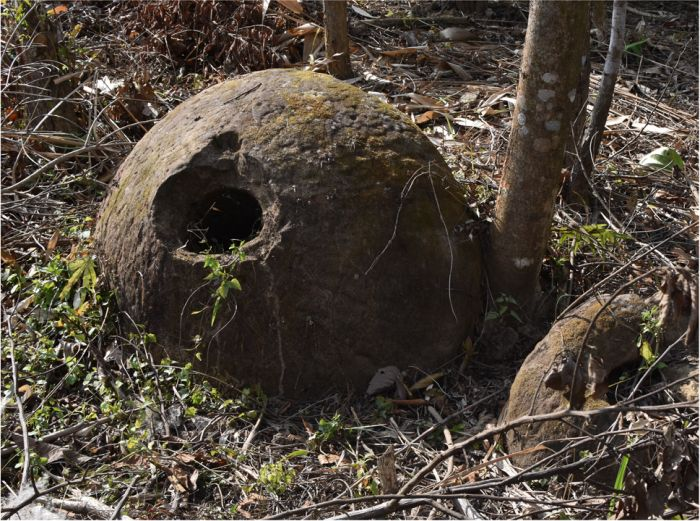
- Some jars are tall and cylindrical, while others are partly or fully buried in the ground.
- Some of them spanned up to three metres high and two metres wide. Some of the jars feature decorative carvings, while others are plain.
What is the History of Megaliths in Assam?
- The jars of Assam were first sighted in 1929 by British civil servants James Philip Mills and John Henry Hutton, who recorded their presence in six sites in Dima Hasao: Derebore (now Hojai Dobongling), Kobak, Kartong, Molongpa (now Melange Puram), Ndunglo and Bolasan (now Nuchubunglo).
- Two sites were discovered in 2016. In 2020, four more sites were discovered by the History and Archaeology Department at North-Eastern Hill University, Shillong, Meghalaya.
- At one site, Nuchubunglo, as many as 546 jars were found which was the largest such site in the world.
What is the significance of the Findings?
- While the jars are yet to be scientifically dated, the researchers said links could be drawn with the stone jars found in Laos and Indonesia.
- There are typological and morphological similarities between the jars found at all three sites.
- There is no reported parallel anywhere else in India, apart from the northeast – this points to the fact that once upon a time a group of people having similar kind of cultural practice occupied the same geography between Laos and Northeast India.
- Dating done at the Laos site suggests that jars were positioned at the sites as early as the late second millennium BC.
- In Laos, researchers had said there was a “strong association” between the stone jars and mortuary practices, with human skeletal remains found inside and buried around the jars.
- In Indonesia, the function of the jars remains unconfirmed, although some scholars suggest a similar mortuary role.
- It calls for more research to understand the “likely cultural relationship” between Assam and Laos and Indonesia.
What are Megaliths?
- A megalith is a large stone that has been used to construct a prehistoric structure or monument, either alone or together with other stones.
- Megaliths were constructed either as burial sites or commemorative (non-sepulchral) memorials.
- The former are sites with actual burial remains, such as dolmenoid cists (box-shaped stone burial chambers), cairn circles (stone circles with defined peripheries) and capstones (distinctive mushroom-shaped burial chambers found mainly in Kerala).
- The urn or the sarcophagus containing the mortal remains was usually made of terracotta. Non-sepulchral megaliths include memorial sites such as menhirs.
- In India, archaeologists trace the majority of the megaliths to the Iron Age (1500 BC to 500 BC), though some sites precede the Iron Age, extending up to 2000 BC.
- Megaliths are spread across the Indian subcontinent. The majority of megalithic sites are found in Peninsular India, concentrated in the states of Maharashtra (mainly in Vidarbha), Karnataka, Tamil Nadu, Kerala, Andhra Pradesh, and Telangana.
Major Megalithic Sites in India
Helina: Anti-Tank Guided Missile
Why in News?
India has successfully flight-tested Helina, an Anti-Tank Guided Missile (ATGM), in Pokhran.
- According to the Defence Research and Development Organisation (DRDO), it is one of the most advanced Anti-Tank Weapons in the world.
- The test was part of user validation trials of the third generation ‘fire and forget’ class missiles developed by the DRDO.
What is Helina?
- About: Helina has been developed by the Defence Research and Development Laboratory (DRDL), Hyderabad under the Missiles and Strategic Systems (MSS) cluster of the DRDO.
- Successful user trials of the missile have been conducted since 2018.
- Features: It has a maximum range of seven kilometers and has been designed and developed for integration on the weaponized version of the ALH (Advanced Light Helicopter).
- The missile system has all-weather, day, and night capability and can defeat battle tanks with conventional armour as well as explosive reactive armour.
- It has been developed for integration with choppers in both the Army and the Air Force.
- The Air Force version of Helina is sometimes referred to as Dhruvastra.
- Helina can engage targets both in direct hit mode as well as top attack mode.
- Top Attack Mode: In this mode, the missile is required to climb sharply after launch and travel at a certain altitude, and then plunge on the top of the target.
- Direct Hit Mode: The missile travels at a lower altitude, directly striking the target.
- Other Anti-tank Missiles: The DRDO has designed and developed a range of anti-tank missile technologies that include:
- The Nag: It is a third-generation fire-and-forget missile developed for mechanized formations to engage heavily fortified enemy tanks.
- MPATGM: It stands for Man-Portable Anti-Tank Guided Missile which has a range of 2.5 kilometers, with fire-and-forget and top attack capabilities for infantry use.
- SANT: It is a Smart Stand-off Anti-Tank Missile being developed for launch from the Mi-35 Helicopter for the Air Force’s anti-tank operations.
- ATGM for MBT Arjun: ATGM for MBT Arjun is a laser-guided, precision-guided munition that is launched from the 120mm rifled gun of the Arjun tank to engage and defeat Explosive Reactive Armour-protected armoured targets.


